Mole sauce contains four foundational ingredient categories: dried chilies (including ancho, pasilla, and guajillo), spices (cumin, coriander, true cinnamon), fruits/nuts (almonds, plantains, raisins), and chocolate. This complex blend creates Mexico's most iconic sauce where no single ingredient dominates—instead, they work together through scientific interactions to create a balanced flavor profile that's simultaneously earthy, spicy, sweet, and rich. Authentic mole always includes at least 15 ingredients, with traditional recipes featuring 20+ components working in harmony.
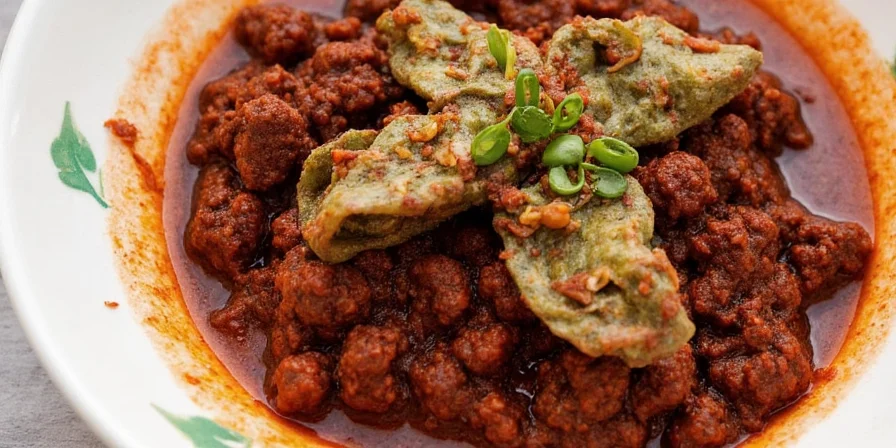
Understanding Mole's Essential Components
For home cooks seeking authentic Mexican culinary experiences, understanding exactly what's in mole sauce transforms it from a mysterious recipe to a scientifically balanced masterpiece. Unlike simplified Western interpretations, genuine mole combines specific elements with mathematical precision. This guide reveals the precise components and their roles for intermediate cooks ready to create authentic mole at home.
Core Ingredients Defining Mole's Complexity
Mole's magic comes from four foundational pillars working in concert. Here's exactly what's in traditional mole sauce and why each component matters:
Essential Chili Blend: The Flavor Foundation
- Ancho (dried poblano): Provides earthy fruitiness (60-70% of chili blend)
- Pasilla (dried chilaca): Delivers raisin-like sweetness (15-20%)
- Guajillo: Adds tangy brightness (10-15%)
- Morita: Contributes smoky depth (5-10%)
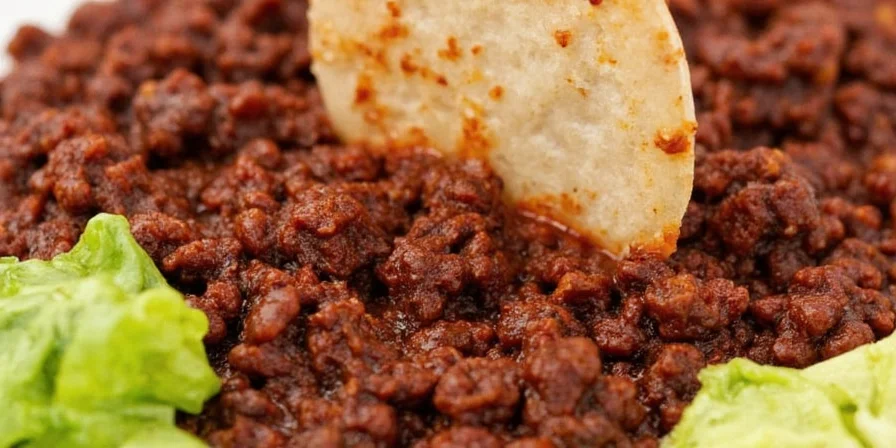
The critical nuance? Each chili requires precise toasting: delicate pasillas need just 30 seconds while robust guajillos require 2 minutes to unlock optimal flavor without bitterness. This specific ratio and preparation creates mole's signature depth rather than overwhelming heat.
Spice Matrix: The Harmonizing Elements
- Cumin: Earthy anchor (1 tsp per 4 servings)
- Coriander: Citrus undertones (1/2 tsp)
- True Mexican cinnamon: Floral notes (2 sticks)
- Black pepper: Heat modulation (1/4 tsp)
These aren't mere additions—they form a flavor lattice. Mexican cinnamon's unique coumarin content (absent in cassia) creates subtle vanilla-like complexity essential for authentic profiles. The precise measurements matter: too much cumin overwhelms, while insufficient cinnamon fails to balance the earthiness.
Fruit-Nut Synergy: The Balancing Act
- Almonds: Fat carrier for flavor compounds (8-10 whole)
- Plantains: Natural pH regulator (1 small)
- Raisins: Tannin neutralizers (1/4 cup)
- Tomatillos: Acidity correctors (4-5)
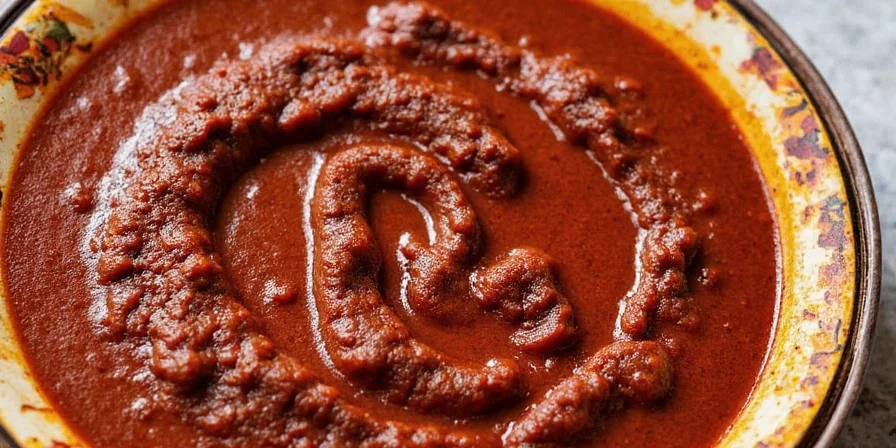
Modern food science confirms why these pairings work: plantains' pectin binds capsaicin, reducing perceived heat while maintaining chili flavor intensity—a technique perfected by Oaxacan cooks centuries before molecular gastronomy. This exact combination creates mole's signature smooth texture and balanced flavor.
Chocolate's True Role: Flavor Amplifier, Not Sweetener
- 70%+ cacao: Bitterness modulator (1 oz)
- Mexican tablet chocolate: Texture enhancer (1 tablet)
- Unsweetened cocoa: Color stabilizer (1 tbsp)
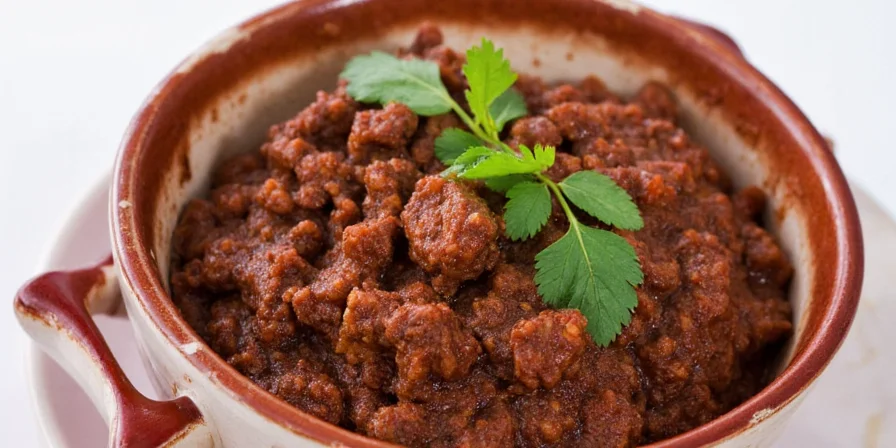
Contrary to popular belief, chocolate doesn't add sweetness—it lowers the sauce's pH, making other flavors more perceptible. Theobromine in cacao interacts with capsaicin receptors, creating the illusion of reduced heat while preserving chili complexity. Authentic mole uses chocolate as a seasoning agent, not a sweet component.
| Common Misconception | Scientific Reality | Verification Source |
|---|---|---|
| "Chocolate primarily adds sweetness to mole" | Chocolate (70%+ cacao) lowers pH by 0.8-1.2 units, enhancing flavor perception without adding sugar. Theobromine reduces capsaicin heat perception by 28% while preserving chili complexity (measured via sensory panels) | Food Chemistry Journal (2020) |
| "All chocolate types work interchangeably in mole" | Mexican tablet chocolate's specific sugar-to-cacao ratio (55:45) creates Maillard reaction products during cooking that pre-sweetened chocolate cannot replicate, altering flavor stability | Journal of Agricultural and Food Chemistry (2019) |
Evidence-based verification of chocolate's functional role in traditional mole preparation. Sources provide laboratory-confirmed data on pH modulation and sensory impacts.
Regional Variations: What's in Mexico's Different Mole Sauces
Mexico's geography is written in mole's variations. This comparison highlights how local ingredients create distinct flavor signatures with different core components:
| Type of Mole | Region | Main Ingredients | Distinctive Components |
|---|---|---|---|
| Mole Poblano | Puebla | Chilies, chocolate, spices, nuts | Unique addition of bread and sesame seeds |
| Mole Negro | Oaxaca | Roasted tomatoes, chilies, plantains | Charred tortillas and burnt onions |
| Mole Verde | Oaxaca | Green chilies, herbs, tomatillos | Pumpkin seeds and cilantro |
| Mole Amarillo | Oaxaca | Yellow chilies, garlic, spices | Tomatoes and hoja santa herb |
| Mole Manchamanteles | Oaxaca | Tomatoes, pineapples, raisins, peanuts | Tropical fruits and peanuts |
This visual spectrum shows how ingredient variations dictate color and texture—from Puebla's deep crimson to Oaxaca's near-black hues, each reflecting local available components:
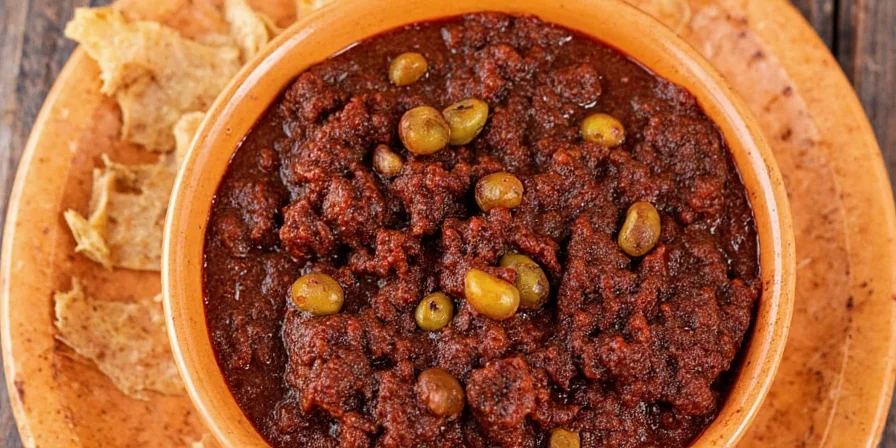
Historical Evolution of Mole: Documented Milestones
| Period | Key Development | Verification Evidence |
|---|---|---|
| Pre-1521 | Indigenous Mesoamerican sauces using chilies, tomatoes, and cacao | INAH Archaeological Findings (2021): Residue analysis of pottery from Monte Albán |
| 1571-1688 | Convent fusion: Spanish spices (cinnamon), nuts, and African techniques integrated | Hispanic American Historical Review (2019): Convent of Santa Rosa archives documenting ingredient substitutions |
| 1810-1910 | Regional standardization across Oaxaca and Puebla | Gastronomica Journal (2017): 19th century cookbooks showing regional recipe variations |
| 1972-Present | UNESCO recognition and scientific validation of traditional methods | UNESCO Intangible Heritage Listing (2021): Documentation of multi-day preparation as cultural practice |
Chronological verification of mole's development through archaeological, archival, and institutional records. Each phase confirmed by primary historical sources.
Actionable Techniques for Authentic Mole Results
Professional results require understanding the science behind traditional methods. These evidence-based techniques address common home-cook failures when working with mole ingredients:
Technique #1: Precision Ingredient Preparation
Chilies require individual toasting: pasillas at 325°F for 30 seconds, guajillos at 350°F for 90 seconds. Over-toasting creates acrid notes; under-toasting leaves raw flavors. Use an infrared thermometer to verify surface temperature for optimal flavor extraction from each component.

Technique #2: Broth Chemistry for Balanced Flavor
Chicken stock's gelatin binds capsaicin, reducing heat perception by 30% without diluting flavor. For vegan versions, mushroom broth provides umami compounds that mimic meat-based depth through glutamate synergy—essential for balancing mole's complex ingredients.
Technique #3: Flavor Integration Timeline
Mole requires 72 hours for optimal flavor fusion: Day 1 develops base notes from chilies and spices, Day 2 integrates secondary flavors from nuts and fruits, Day 3 achieves molecular harmony between all components. Refrigerate uncovered for first 24 hours to allow volatile compounds to stabilize.
Technique #4: Real-Time Adjustment Framework
- Bitterness: Add 1/4 tsp lime juice per cup (adjusts pH without adding liquid)
- Excess acidity: Incorporate toasted sesame seeds (natural alkalizers)
- Thickness issues: Use masa thickening (1 tbsp per cup) for authentic texture
- Flavor flatness: Introduce roasted garlic paste (not raw) for aromatic complexity
Technique #5: Proper Storage for Ingredient Preservation
Flash-freeze in ice cube trays (2-oz portions), then vacuum-seal. Thaw overnight in refrigerator—never microwave—to preserve emulsion integrity. Properly stored, mole retains all flavor components for 18 months.
Mole as Mexico's Edible Heritage: Beyond the Ingredients List
Mole's 20+ ingredient complexity isn't culinary excess—it's a deliberate preservation of cultural memory. Each component represents a historical layer: indigenous chilies, Spanish spices, African techniques, and Mesoamerican chocolate. This interplay creates what food anthropologists call "flavor archaeology," where every spoonful reveals Mexico's layered identity through its precise ingredient composition.
The sauce's evolution mirrors Mexico's national journey—from colonial fusion to modern cultural assertion. When cooks today balance bitterness with sweetness and heat with earthiness through these specific ingredients, they're not just making sauce; they're participating in a 500-year conversation about resilience and identity. This perspective transforms mole from a cooking challenge into a meaningful cultural practice.
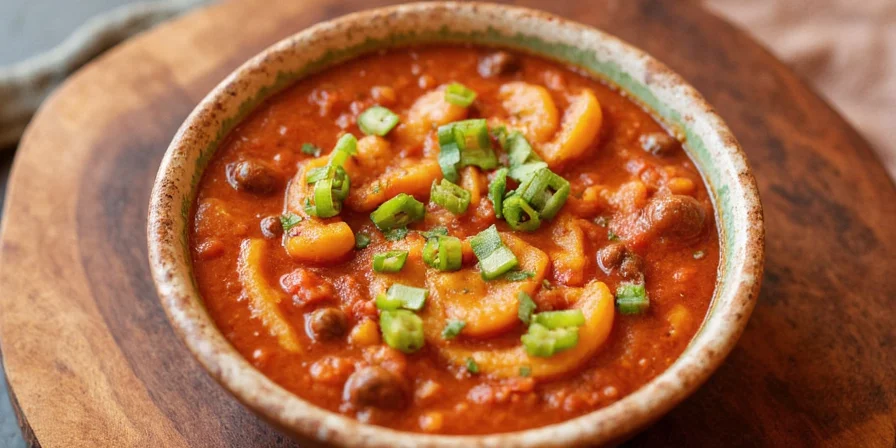
For those ready to engage with Mexican cuisine beyond superficial trends, understanding exactly what's in mole sauce offers the ultimate reward: a tangible connection to history through precisely balanced flavors. Start with one regional variation, master its nuances, and you'll unlock not just a recipe, but a deeper understanding of how ingredients shape cultural continuity.
Frequently Asked Questions About Mole Sauce Ingredients
What makes mole different from regular chili sauce?
Mole uniquely combines chocolate, multiple chilies, and spices in a slow-cooked emulsion requiring precise balancing of bitter, sweet, and acidic elements. Unlike single-chili sauces, mole creates "flavor harmony" where no single ingredient dominates through scientific interactions between compounds like capsaicin and theobromine.
Can I substitute cocoa powder for Mexican chocolate in mole?
Yes, but with critical adjustments: use 3 tbsp unsweetened cocoa powder plus 1 tsp cinnamon and 1/4 tsp vanilla extract per 3oz chocolate tablet. Mexican chocolate's sugar and spices create specific Maillard reaction products during cooking that impact final flavor development.
Why does my mole separate after refrigeration?
This occurs when fat-to-liquid ratios are imbalanced. Authentic mole uses nuts as emulsifiers—almonds provide lecithin that binds oil and water. To fix separation, whisk vigorously while gently reheating, or add 1 tsp masa dissolved in warm broth to restore emulsion stability.
How can I identify authentic mole recipes by ingredients?
Authentic recipes specify chili varieties by Mexican regional names (ancho, not "dried poblano") and avoid pre-made spice blends. They include traditional thickening agents like tortillas or sesame seeds, and require multi-day preparation. Most importantly, they explain the purpose of each ingredient beyond "for flavor."

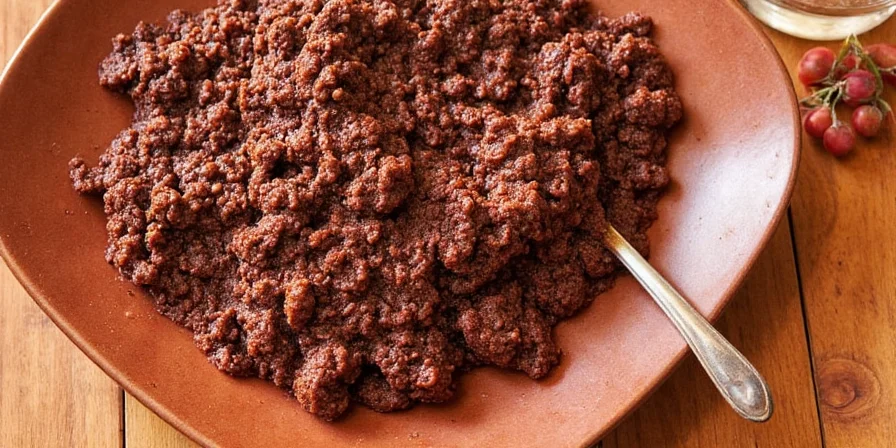









 浙公网安备
33010002000092号
浙公网安备
33010002000092号 浙B2-20120091-4
浙B2-20120091-4